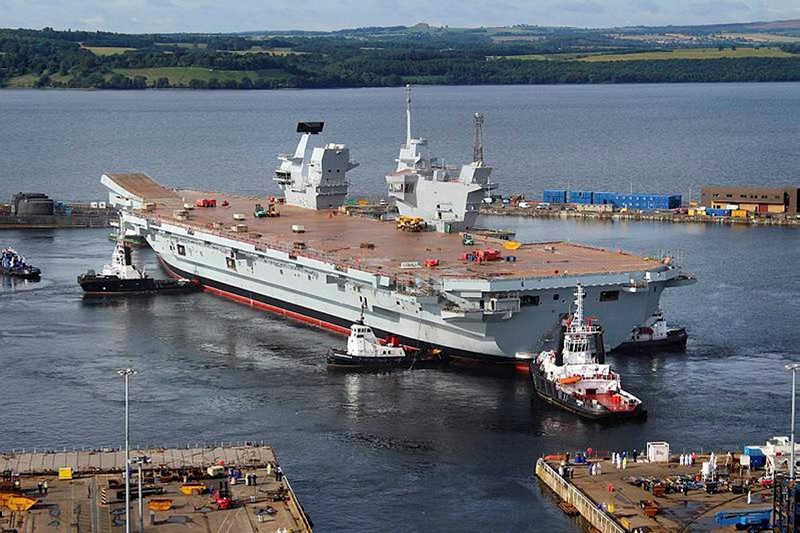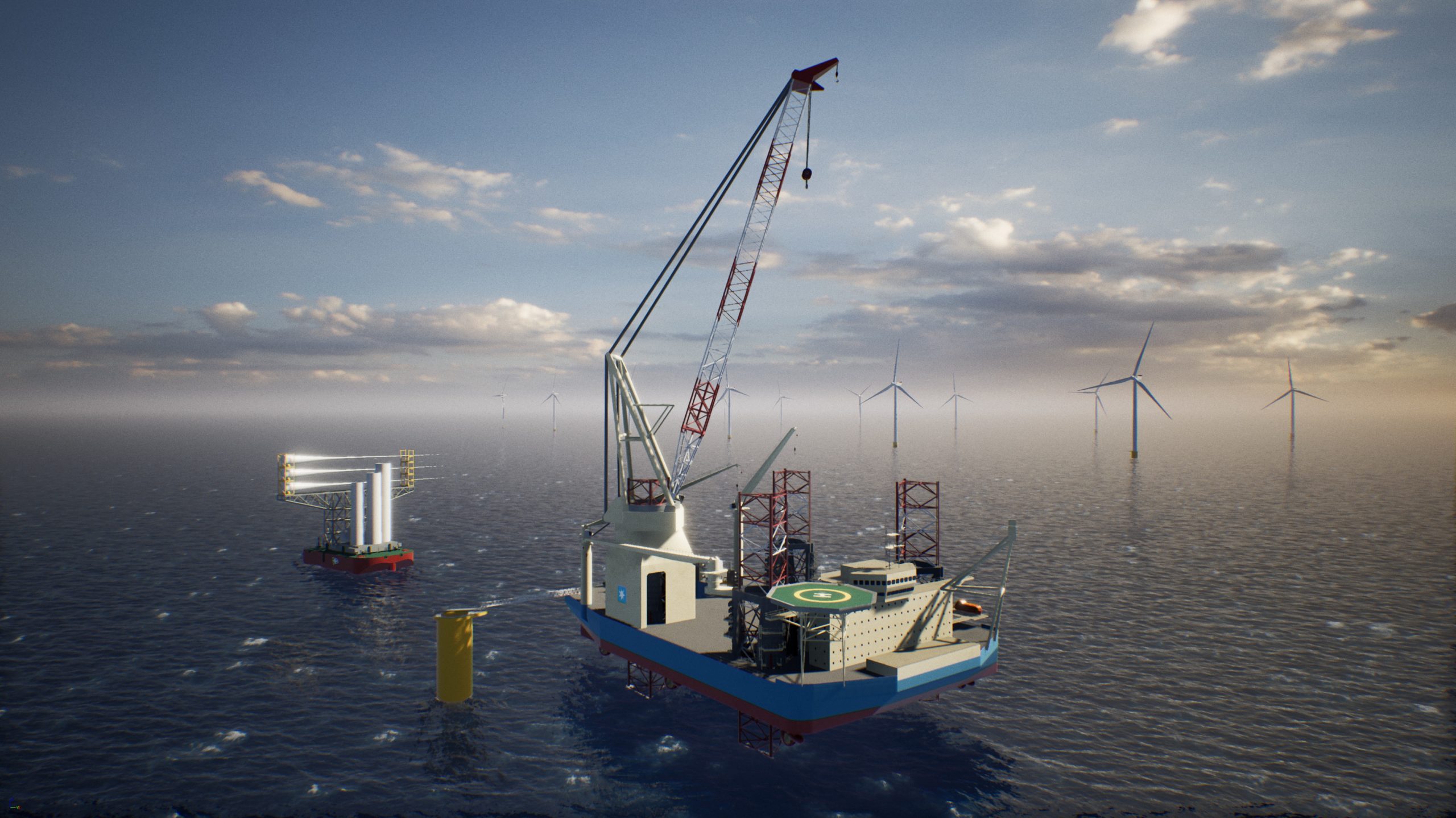The Royal Navy’s largest ever warship HMS Queen Elizabeth is floated out of her dock for the first time in Rosyth, Scotland in July 2014. Photo: UK Ministry of Defence
By Benjamin Katz
(Bloomberg) — The joint venture that is building two aircraft carriers for the U.K.’s Royal Navy is fighting to meet a 6.2 billion pound ($9.1 billion) budget after unexpected costs emerged, group officials said.
The HMS Queen Elizabeth, the first of the two carriers under construction in Rosyth, Scotland, is on schedule to begin harbor trials next year and fleet operations in 2020, the shipbuilders said during a reporters’ tour.
The largely French-designed ship will carry 40 aircraft and about 700 crew members, while baking as many as 3,000 baguettes a day. BAE Systems Plc, Babcock International Group Plc and Thales SA, which operate the carrier-building joint venture, are fighting to prevent a spending bloat.
“The budget is a challenge,” said Jon Pearson, who is responsible for delivery of the first of the two carriers, in an interview at the Rosyth shipyard, owned by Babcock. “We’re working incredibly hard to keep costs down as much as we can but it’s reasonable to say there are some cost challenges.”
Any overruns would be shared between the group and the U.K. Ministry of Defence, officials say. “The program is approved at 6.2 billion pounds,” the ministry said in a statement. “That remains the budget and that is what we intend to stick to.”
Scottish Winter
Ian Booth, managing director of the joint venture, said the main problem was not the ship’s high-tech gear but the number of hours workers are spending on simple tasks. “It’s very easy on this ship to underestimate just the amount of cleaning, painting, scaffolding,” he said.
Gales during the Scottish winter have damaged tanks of paint that had been positioned on the ship’s 284 meter (931 foot) flight deck. That alone has cost the program “a few hundred thousand pounds,” Booth said.
“My intention is to come in on the cost target, and I’m still in with a good chance of doing that,” Booth said in an interview in the control room of the Queen Elizabeth. Neither Booth nor Pearson provided an estimate of any possible overruns.
Outgoing Babcock Chief Executive Officer Peter Rogers said Wednesday that the alliance had hired “a lot of contract labor” to avoid an oversupply of shipyard workers once the carrier work is complete. The company expects revenue from the carriers to decline by 60 million pounds this year as the program advances.
Export Prospects
Rogers said that after delivery of the carriers, there are prospects for exporting the radar, weapon system and control technology designed for the ships.
“Thales has a history of exporting,” he said. “So does BAE, and we would clearly be available and delighted to support them in doing that.”
The U.K. government has commissioned former Babcock CEO John Parker to conduct a national shipbuilding review to assess what ships the navy would need to order to sustain the U.K.’s existing shipyards. The report is due at the end of the year.
The second carrier, HMS Prince of Wales, is running about nine months ahead of schedule, and about 18 months behind the Queen Elizabeth, officials said.
© 2016 Bloomberg L.P

 Join The Club
Join The Club











